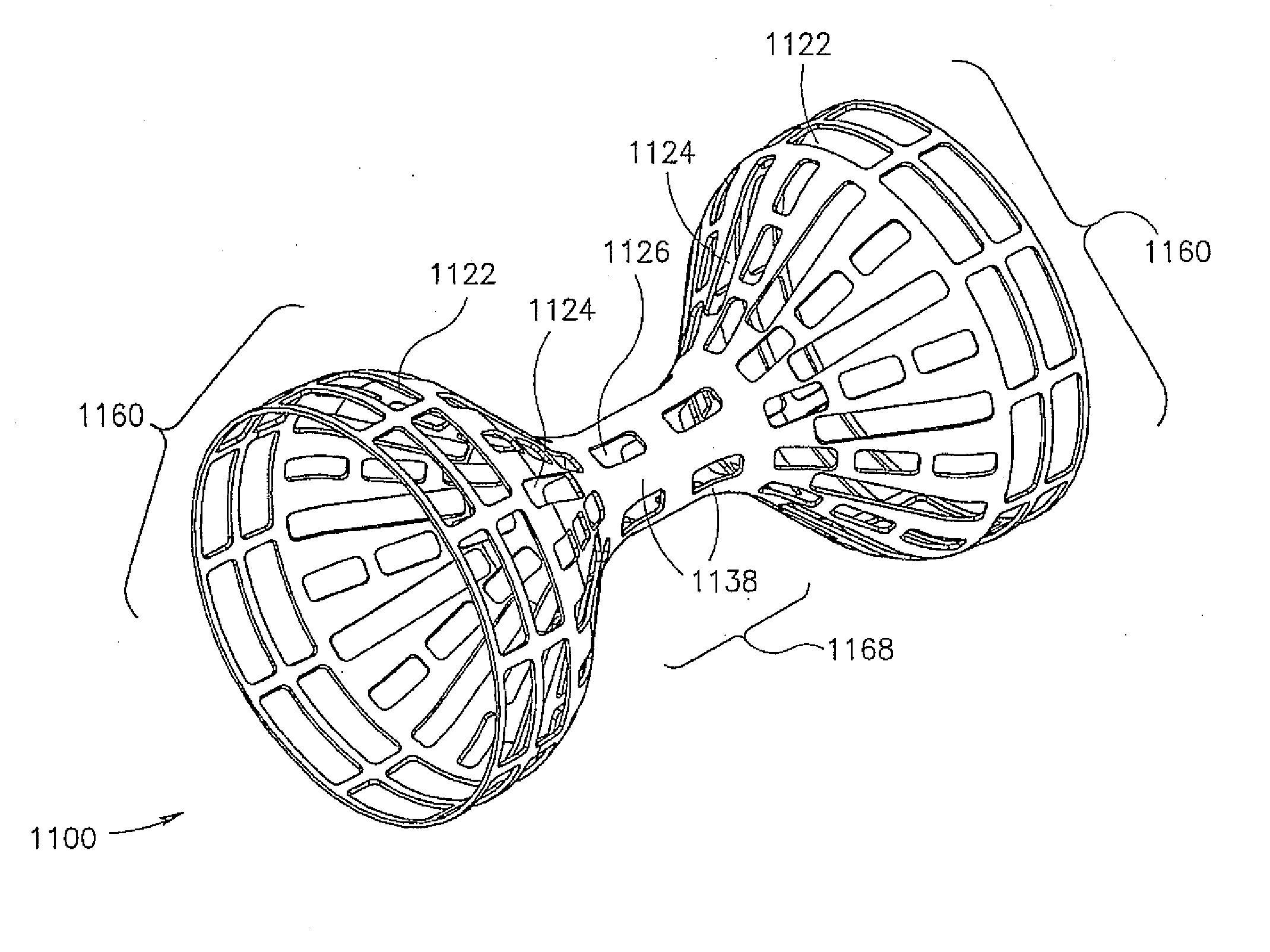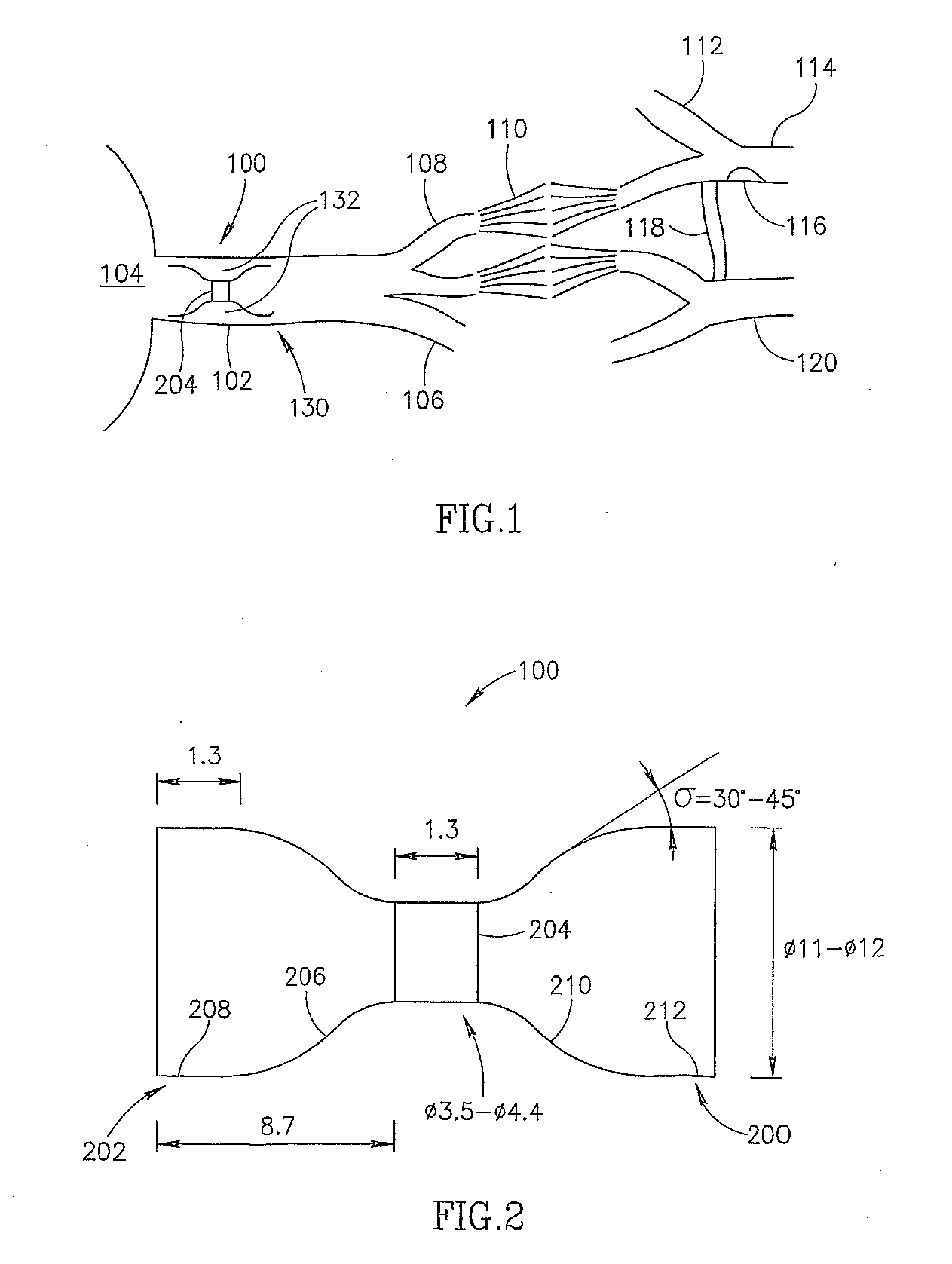Flow reducing implant
a technology of implant and flow, applied in the field of implants, can solve the problems of ischemia and brain death, occlusion of coronary arteries, and drastic reduction of heart output, and achieve the effect of preventing rotational motion
- Summary
- Abstract
- Description
- Claims
- Application Information
AI Technical Summary
Benefits of technology
Problems solved by technology
Method used
Image
Examples
Embodiment Construction
[0125]FIG. 1 is a schematic showing of a flow reducing implant 100 installed in a coronary sinus vein 102, in accordance with an exemplary embodiment of the invention. Coronary sinus 102 drains a plurality of cardiac veins 106 into a right atrium 104. The cardiac circulation is generally hierarchical and comprises of stages of reducing (or increasing) diameter. Thus, veins 106, in turn, drain a plurality of thin venules 108, which, after a few stages, drain a plurality of capillaries 110. Capillary 110 is fed by a plurality of arterioles 112, which, after a few stages, are fed by a plurality of coronary arteries 114 and 120. A stenosis 116 is shown in a coronary artery 114. While the cardiac circulation is generally hierarchical, some connection exists between different branches. Occasionally, the existence of stenosis 116 will cause a collateral connection 118 to spontaneously form (or widen an existing connection) between coronaries 114 and 120, bypassing stenosis 116.
[0126]In som...
PUM
 Login to View More
Login to View More Abstract
Description
Claims
Application Information
 Login to View More
Login to View More - R&D
- Intellectual Property
- Life Sciences
- Materials
- Tech Scout
- Unparalleled Data Quality
- Higher Quality Content
- 60% Fewer Hallucinations
Browse by: Latest US Patents, China's latest patents, Technical Efficacy Thesaurus, Application Domain, Technology Topic, Popular Technical Reports.
© 2025 PatSnap. All rights reserved.Legal|Privacy policy|Modern Slavery Act Transparency Statement|Sitemap|About US| Contact US: help@patsnap.com



